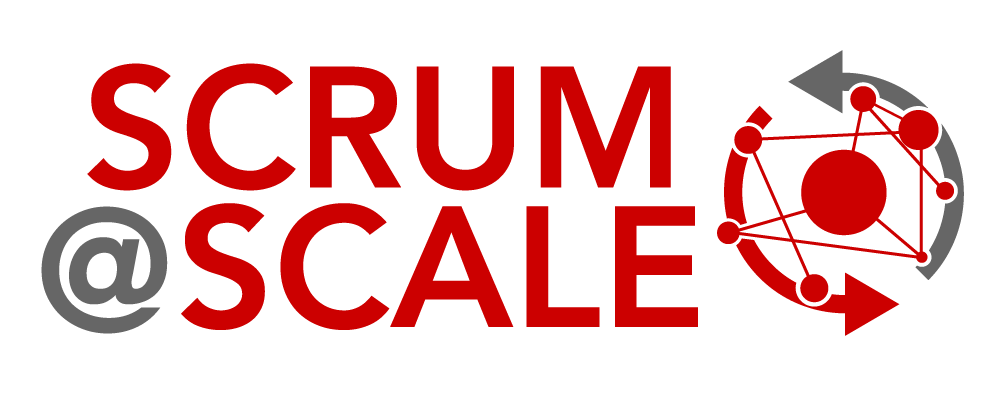Scrum@Scale Case Study
Flatter, More Agile, and Energized! – Keisuke Wada
In “Flatter, More Agile, and Energized!”, learn how Registered Scrum@Scale Trainer Keisuke Wada led one of Japan’s top automobile manufacturers to increase both velocity and employee happiness, during a State of National Emergency due to the global pandemic.
CASE STUDY SNAPSHOT
Organization: NDA
Organization Size: Large
Industry: Transportation and Automotive
Topic: Organizational Culture
Date: February 2021
Website: https://www.linkedin.com/in/keisuke-wada-691286184/
Case Study Summary
“Because they were Scrum teams, they immediately adapted to the new style of work from home; they increased both their velocity and happiness, despite the state of emergency.”
In “Flatter, More Agile, and Energized!”, learn how Registered Scrum@Scale Trainer Keisuke Wada led one of Japan’s top automobile manufacturers to increase both velocity and employee happiness, during a State of National Emergency, due to the global pandemic.
SUMMARY: Transformation During a Time of International Crisis
Keisuke was initially contracted to help one of the biggest automobile manufacturers in the world, with ownership of companies in Japan, the United States, and Germany, to increase velocity, streamline decision-making, and promote entrepreneurship. New leadership determined the company needed to become more customer-focused and decentralized—and the answer was Scrum@Scale. To begin with, an extremely complex IT system became a bottleneck for the company. Therefore, the transformation began with the IT department and gradually expanded to the rest of the company. However, the newly installed systems were then put to an immediate test. Just two months after implementing initial changes for the company, a National State of Emergency was declared. The employees had to completely change their way of working as they moved to work from home, which obviously challenged the company to become flatter, more Agile, and energized!
The Solution: Improved Velocity and Employee Happiness
Keisuke began his transformation with the IT department, the source of the bottleneck, with the long-term goal of expanding Scrum@Scale to the entire company. The Chief Digital Officer received training at first, to begin the transformation. Subsequently, a leadership workshop was held for company leaders to better understand Scrum@Scale, for consensus and select teams. This was then followed by an Organization Design Workshop to create a company vision, form the Executive Action Team (EAT), and create guidelines for the Executive Scrum Masters (ESM). Finally, Pilot Scrum Teams were launched with the support of Scrum Master training, a backlog workshop, a team launch workshop, and three months of coaching.
The transformation undoubtedly was an outstanding success. In addition to the original goals of increasing velocity and responsiveness to customer needs, the new organization system supported a seamless transition to a work from home environment due to the pandemic. The Scrum@Scale method allowed not only for the implementation of the original solutions envisioned by the company, but also created a flexible, high-speed environment, which the company championed to quickly adapt to the changes caused by the pandemic.
Outcomes from Implementing Scrum@Scale
Scrum@Scale not only removed the bottleneck, but also increased team velocity, created an Agile, adaptable work environment, and improved employee happiness and engagement.
- In March 2020, with the declared State of Emergency, pilot teams immediately adopted the new workstyle from home, which increased their velocity and happiness.
- Before Scrum, the complicated decision-making process required several months. But now, collaboration with Product Owners allows for quicker and more efficient decision-making.
- Employees are altogether more engaged.
- Team members likewise feel leadership is very supportive.
- 40% of IT employees have since adopted Scrum, with plans to expand to all IT employees by March of 2022.
- Transparency of the Impediment board helped every team member understand the process.
- Reports on the actual results of Return on Investment (ROI) and Key Performance Indicators (KPI) have also been released.
- Team bonuses replaced individual bonuses.
- Scrum@Scale has since expanded to the marketing department.
Who Is Keisuke Wada
Keisuke Wada is a Senior Coach with Scrum Inc. Japan. In describing his goal, he says “I am very passionate about transforming Japanese companies to be faster, more Agile, and energized.”
He is a Manager at KDDI corporation, has worked with Toyota, and is a graduate of the University of Tokyo.
Keisuke says, “Through the spread of Scrum, we aim to make working people all over Japan happy and to generate new innovations from Japan one after another.”



